6 March:
A district judge blocked decreasing NIH indirect costs.
The passage on firings at the NSF was updated.
The section on where things stand at the NIH had new comments added.
24 February:
Paragraph 6 of Where do things now stand at the NIH? was updated to note the indirect cost cap has been blocked pending a ruling from a federal judge.
23 February:
The section on study section meetings postponements at the NIH was updated.
Updated the section on redundancies at the NSF.
A paragraph on announced layoffs at the NIH was added.
The 5th and 6th paragraphs in Where do things now stand at the NIH? was updated with news on lawsuits being filed to head off cuts to budget.
12 February:
Updated the status of NIH advisory groups and amended Jeremy Berg’s affiliation.
11 February:
Included changes to indirect costs in NIH grants and possible cuts to the NSF budget, and an update to the status of NIH study section panels.
Alarm bells were sounded by America’s research community when, four days into Donald Trump’s second term as president, he issued executive orders that led to the indefinite suspension of peer review at the country’s largest funder of biomedical and health research, the National Institutes of Health (NIH). There was a sense that this was just the tip of the iceberg. It was.
What happened at the NIH?
Upon his inauguration on 20 January, Trump released a slew of executive orders, including one that established a regulatory freeze at funding agencies. And a few days later, his acting director of the Department of Health and Human Services (HHS) – the NIH’s parent agency – delivered a separate directive prohibiting health agencies, such as the NIH, from releasing any public communication until they had been vetted by a Trump administration official.
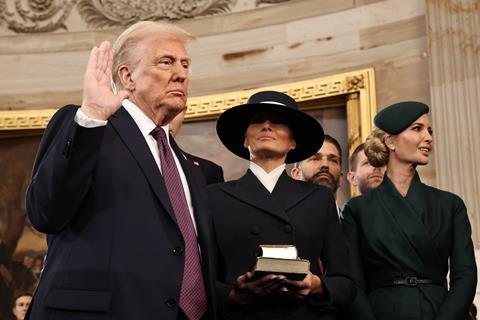
These edicts appear to have led to the suspension of panels known as study sections that review NIH research grant applications. This sparked serious concern among scientists that important work would be halted and that there would be a massive backlog of research projects to be vetted when these research review panels recommenced their meetings. Grant award notices also appeared to fall under the category of official communications that were stopped, prompting fear that funding for NIH-supported researchers and universities would cease as well.
On his first day in office, Trump also instituted a hiring freeze at all federal agencies, including those that fund research. The order was to last 90 days, or until a plan to reduce the size of the federal government’s workforce is developed and approved at the executive level. The NIH apparently rescinded all job offers that were to start after 8 February.
On 10 February, a US federal judge ruled that the Trump administration has in fact not complied with his separate order to unfreeze federal grants and specifically directed it to restore the funding of agencies including the NIH.
What about the NSF?
In late January, the National Science Foundation (NSF) – the principal funder of chemistry grants in the US – cancelled dozens of panels slated to review research grant applications following an immediate freeze on federal aid announced by the White House Office of Management and Budget (OMB), which apparently applied to research grants. ‘The use of federal resources to advance Marxist equity, transgenderism, and green new deal social engineering policies is a waste of taxpayer dollars that does not improve the day-to-day lives of those we serve,’ read the memo by Matthew Vaeth, acting director of OMB.
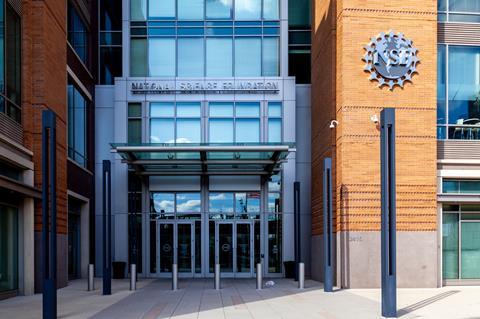
Overall, federal agencies were directed to submit detailed lists of projects suspended under the new order by 10 February, after which a senior political appointee would ensure that it ‘conforms to administration priorities’. They were asked to pause new awards and disbursement of federal funds under all open awards until the OMB could review them and provide guidance. Further, the memo stated that already awarded grants can be cancelled if they ‘are in conflict with administration priorities’.
The result was widespread panic among NSF grantees about how they would keep the lights on and pay salaries. There were reports that the agency was unilaterally rejecting salary requests by postdoctoral fellows.
After a judge temporarily blocked the directive until it could be considered more closely, the administration almost immediately rescinded it. But, later that same day, the White House appeared to at least partially walk back that withdrawal when press secretary Karoline Leavitt posted on X: ‘This is NOT a rescission of the federal funding freeze. It is simply a rescission of the OMB memo.’ She warned that Trump’s executive orders ‘on federal funding remain in full force and effect, and will be rigorously implemented’.
Where do things now stand at the NIH?
After a two-week lapse, NIH study sections began meeting again on 3 February to review grant proposals. But soon news trickled out that more recent meetings of these review panels were being cancelled, often with only a few hours’ notice, apparently due to the lack of public notices. Apparently, three of eight study section meetings were cancelled on 18 February, and the next day all eight were cancelled. Some study sections that were scheduled to review grant submissions in March are now reportedly being pushing it back to April. Meanwhile, meetings of some of the agency’s advisory committees – which are made up of independent experts who advise the agency’s director on grant funding – appear to have not yet restarted. ‘This means no meetings where (1) new grants are competitively reviewed on their merits, (2) new and established multi-year grants are formally awarded, obligating the government to provide money,’ Prasad Jallepalli, a molecular biologist and lab head at Memorial Sloan Kettering Cancer Center in New York City, wrote on the social media platform Bluesky. ‘It’s a rolling complete shutoff of NIH-supported research,’ he stated.
Cynthia Wolberger, who directs the biophysics and biophysical chemistry department at Johns Hopkins School of Medicine in Maryland, posted on Bluesky: ‘There are lots of grants that have already been reviewed but aren’t being funded because council meetings were cancelled.’
Senator Tammy Baldwin, the top Democrat on the Senate appropriations subcommittee that allocates funding for the NIH (which the president must sign into law), announced on 14 February that the Trump directives to date had resulted in the agency awarding 3600 fewer grants and $1 billion less in funding to research institutions across the country compared to the same period in the last administration.
In the meantime, the HHS-wide communications embargo remains in place and continues to halt most communications out of the department’s other agencies like the NIH, although this was supposed to be lifted on 1 February. The HHS website remains down after over a week. And the department’s travel ban, which the Trump administration established on 22 January, also persists.
Another blow came on 7 February when the NIH announced that in all future and existing research grants indirect costs – which are used to cover research-related expenses like lab maintenance, utilities and administrative costs – would be fixed at 15%. ‘The United States should have the best medical research in the world,’ the agency stated. ‘It is accordingly vital to ensure that as many funds as possible go towards direct scientific research costs rather than administrative overhead.’ Indirect costs were previously decided by negotiation and averaged around 30%.
The new policy drew swift backlash from university researchers. For example, the president of the local union that represents nearly 50,000 academic workers across the University of California system said these cuts would ‘instantly open a gap of hundreds of millions of dollars in UC’s research budget’. Stanford University estimated that the 15% indirect cost cap means the university would lose approximately $160 million (£129 million) in NIH funding each year.
In a lawsuit filed in a district court on 10 February, attorneys general from 22 states sued the Trump administration, seeking a temporary block on the policy change. They argued that current grant recipients have already budgeted for and incurred costs based on the previously negotiated rates and the new indirect cost cap would result in ‘layoffs, disruption of ongoing research programs, and laboratory closures’. This was followed by another lawsuit filed by the Association of American Medical Colleges and organisations representing public health schools, hospitals and others, as well as a third lawsuit from the Association of American Universities and several research universities. A federal judge agreed with these arguments and quickly issued a temporary restraining order, which was subsequently extended at a hearing on 21 February while the judge decides whether to issue an injunction against the proposed indirect cost cap plan.
Democrats on the House of Representatives’ appropriations committee have said the move is illegal, noting that there is a provision in annual appropriations that explicitly prohibits any administration from making such changes. ‘The Trump administration is attempting to steal critical funds promised to scientific research institutions … despite an explicit legal prohibition,’ stated the ranking member of the committee, Rep. Rosa DeLauro.
On 5 March a district judge blocked the Trump administration from capping the indirect cost rate at 15% for NIH grantees. Judge Angel Kelley issued a nationwide injunction at the request of 22 Democratic state attorneys general, five medical associations, as well as academic organisations and universities that argue the NIH planned funding cuts were unlawful. The judge ruled that the agency failed to provide, as required, a ‘documented justification’ by making publicly available the ‘policies, procedures and general decision-making criteria’ used to justify deviations from negotiated indirect cost rates, and that the ‘NIH molds the language of the regulation to fit its policy goals.
The agency has also seen significant workforce reductions under the new administration. Approximately 1200 layoffs were made at the National Institutes of Health in mid-February, which represents more than 6% of the workforce.
How about the NSF?
The NSF resumed making grant payments on 2 February, after the same judge issued a second temporary restraining order to block the administration’s attempted federal aid freeze. Nevertheless, the NSF is in the process of reviewing its grants to determine if they are subject to Trump’s executive orders, including the ban on diversity, equity and inclusion (DEI) initiatives.
In terms of whether it can cancel an active award that might be affected by the executive orders, the NSF recently stated that it ‘can not take action to delay or stop payment for active awards based solely on actual or potential non-compliance with the executive orders’, but suggested that the judge’s temporary restraining order allowed the agency to take action for unrelated reasons, including a violation of ‘current NSF grant terms and conditions’.
The NSF confirmed on 3 March that it is in the process of reinstating nearly all of the 86 terminated NSF staff members who were classified as probationary, with backpay. But the agency appears poised for significant and perhaps dramatic funding cuts when President Trump released his overdue fiscal year 2025 budget request in March. Some have suggested that the NSF’s annual budget of over $9 billion could be slashed by two-thirds.
How is DEI involved?
One goal of these executive orders appears to be closer vetting of the research being supported by US science agencies to, for example, cut out studies with a focus on DEI, something that Trump and his allies have repeatedly railed against.
The administration has already issued several executive orders that target such programmes, including one that bans DEI initiatives across the federal government.
A list of dozens of keywords or phrases that can reportedly lead to an NSF grant being pulled was apparently leaked by a program officer at the agency. The list includes ‘biases’, ‘female’, ‘women’ and ‘disabilities’.
What are people saying?
‘The research community is very confused and worried, and in many cases is actually already suffering,’ says Neal Lane, a physicist who served as science adviser to President Bill Clinton and previously as director of the NSF. ‘The agencies are also confused and they don’t know how to respond,’ he adds. ‘So far, the courts have been responsive in trying to halt the damage … we’ve never had a situation like this and the outcome is going to be enormously negative – damaging – to science and technology.’
Lane, who is currently an emeritus professor at Rice University in Texas, predicts that research in certain areas will be stopped and not restarted, possibly until the next administration. ‘My sense is anything having to do with DEI will just simply not be funded – the current activities will be shut off, the money will be stopped, and no new proposals will be reviewed.’ He calls on professional scientific societies in areas like chemistry and physics to speak out collectively and urges researchers to press on with their work and keep submitting grant proposals.
‘I would be prudent and not unnecessarily sprinkle words in my proposal that are just going to invite problems for the reviewers of the agency,’ Lane states. Christine Todd Whitman, who led the Environmental Protection Agency (EPA) under former President George W Bush, agrees. ‘Keep on doing what you are doing without raising any red flags, just don’t stop the critical research,’ she states.
Whitman describes the situation as ‘chaotic’ and says the US research community is ‘in turmoil’. ‘In research, you don’t just turn the lights off one day and turn them back on the next day – policies need to be rolled out in a systematic and thoughtful way,’ she adds.
In the meantime, several research universities, including The Ohio State University, Cornell University and the University of California, Berkeley, have issued guidance and continue to release updates. They have said that grant applications should continue to be submitted but also anticipate delays in proposal review timelines.




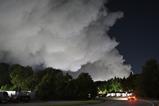
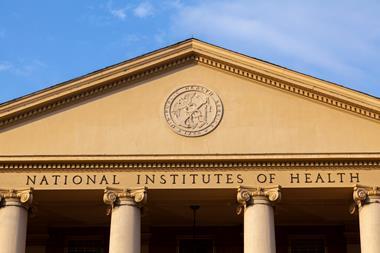
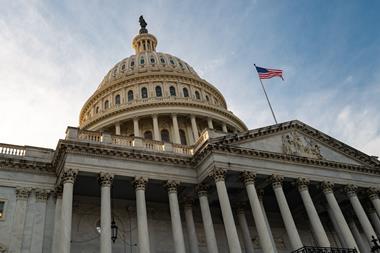
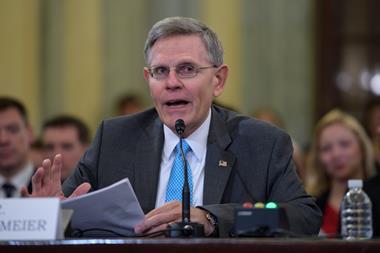
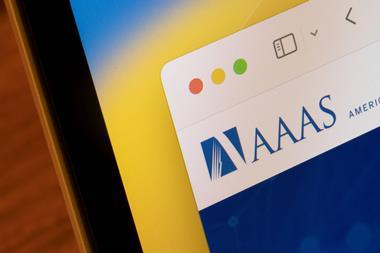
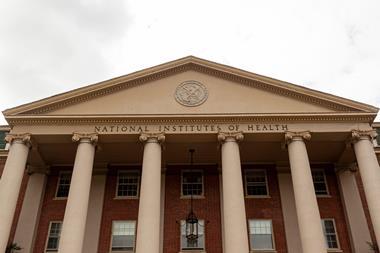
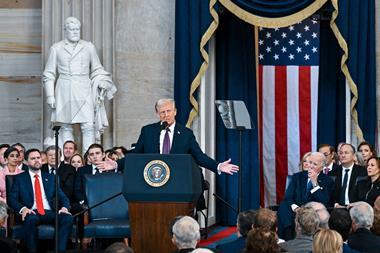


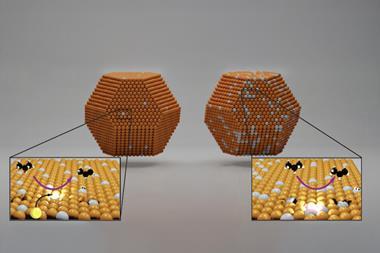


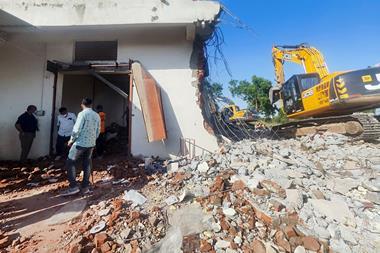
No comments yet